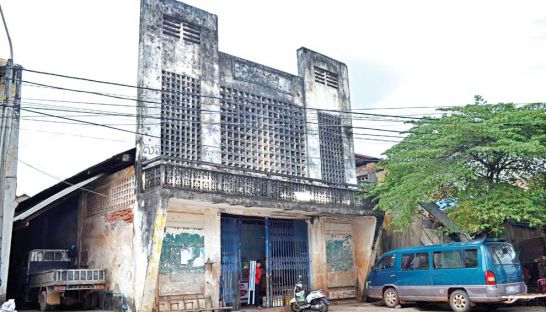Culture Ministry seeks to preserve heritage structures
Culture Ministry seeks to preserve heritage structures
Cambodia is littered with an overwhelming number of architectural heritage sites from a range of periods throughout the country’s history, and these intangible pieces of cultural history play an important role in preserving parts of the culture and boosting socioeconomic development.

Many ancient architectural constructions are still in good condition, most of which were built during the colonial period between 1863 and 1953. There are also many structures in the ancient Angkorian style, the Angkorian style and the post-Angkorian style.
This week, the Ministry of Culture and Fine Arts held a seminar on the management of colonial buildings with more than 90 ministers and heads of ministry departments. The ministry was seeking consultations on a draft of a prakas that was aimed at preserving all of the remaining colonial structures in Cambodia.
According to Thai Norak Satya, spokesman of the Ministry of Culture and Fine Arts, there are colonial buildings dating back to 1431 and other buildings in Phnom Penh that are over 50 years old, including Phnom Penh City Hall, the Ministry of Economy and Finance building and Sisowath High School.
Many heritage constructions are used as administrative buildings for the government, but the number of ancient structures being preserved is shrinking in the face of the country’s rapid development. The ministry has yet to even define exactly what they mean by “heritage constructions” and subsequently does not have a list or number of constructions that need to be preserved. There are thousands of places in Phnom Penh as well as throughout the provinces with constructions that could be considered for preservation.
Satya said that repairs or reconstructions of colonial buildings must comply with the standards and style of the original building. The same materials used to initially build the structure must be used to refurbish it, he added. When any restoration, modification or reconstruction is done to a heritage site, the owner of the building must seek out the advice of a professional architect and a specialist from the Ministry of Culture and Fine Arts.
According to a draft of the ministry’s prakas, the owners of any heritage sites will need to get approval from the ministry 15 days prior to any sale or transfer of the land and structure.
“If there is a good message to the stakeholders, it is that conservation work with these structures isn’t difficult and affects many people. Every country has its own heritage to preserve and to be a part of the tourism sector,” he said.
Despite efforts by the ministry to preserve the structures, he acknowledged gaps in preserving heritage sites that had already been destroyed or removed.
“We don’t want to see the demolition of old buildings like a pagoda in Kampong Thom, and we regret most of the loss of old buildings and the old identities of architecture,” he said.
Prak Sonnara, director-general of heritage at the Ministry of Culture and Fine Arts, said the ministry hopes to preserve national heritage sits from each period of Cambodia’s history. They have focused on conservation and are continuously repairing structures in Phnom Penh, Battambang, Kampot, and Kratie.
“We have a heritage centre, a centre for studying, designing, drawing and organising workshops on the construction of all heritage sites in Cambodia,” he said, adding that “some heritage buildings have become private property, so we have to ask permission from construction owners and cooperate with the Culture Ministry, the Land Management Ministry and City Hall authorities to study and save the original form of construction for the next generation”.
Sonnara said the Ministry of Culture organised a consultation workshop on colonial building management in an effort to teach government officials about the structures and their value to the country.
“The duty of preserving national properties is not only the responsibility of relevant institutions, but also the duty of all the people,” he said.
While the ministry has taken pains to preserve heritage sites, real estate analysts said the practice has both upsides and downsides for the housing market. Sorn Seab, a director at Key Real Estate, told Post Property that it is good for old structures to be maintained for the next generation. But, if the structures are too old and dilapidated, developers may have issues attracting residents.
Seab said the issue was somewhat unrelated to the real estate sector because few of the heritage buildings were residential. But he did urge developers to opt for refurbishment over demolition when it came to older buildings.
“It’s not about the real estate sector because they are not only in those areas slated for new developments, but it can have a minimal effect on colonial building owners who cannot sell,” he said.
Whether or not an area had a heritage site near it had little effect on land prices, he added, because suburban areas have a lot of potential for development with or without access to historic cultural buildings.













